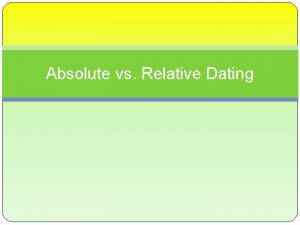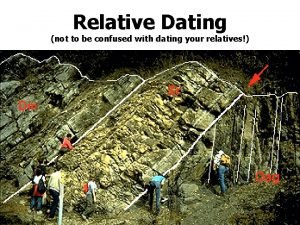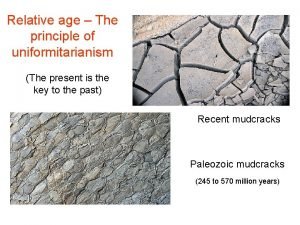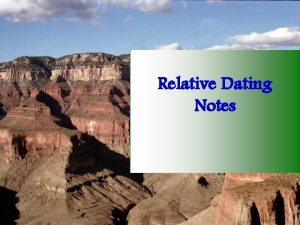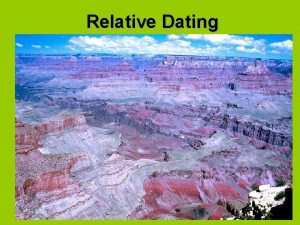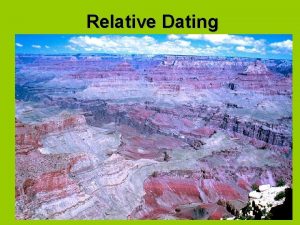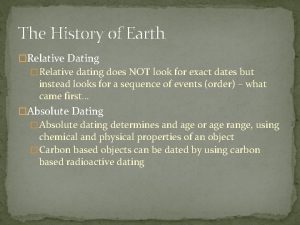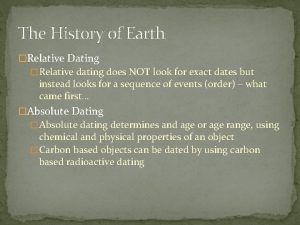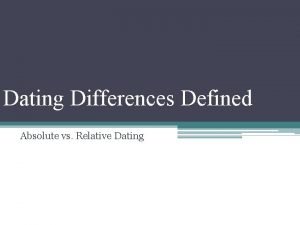EARTHS HISTORY Relative Dating What is relative dating










- Slides: 10

EARTH’S HISTORY Relative Dating

What is relative dating? • A. k. a. – relative time or relative age • Places events in a sequence without assigning any numerical ages. • Example: “This rock layer is older than that rock layer. ” • Most geological work is done in relative time.

How is relative dating used? • There are rules, laws, and principles that used to determine the relative ages of rocks. • All of these are base on correlation. Correlation is used by looking at rock layers in one location and comparing its layers to another location, to see how they match up.

How are rocks layers (strata) deposited? • Law of Super Position – states that in an undisturbed sedimentary rocks, the oldest layers are on the bottom and the youngest layers are on top.

How are rocks layers (strata) deposited? • Principle of Horizontality – states that all rock layers are initially (first) laid down horizontally. • If they are not horizontal this indicates some sort of tectonic action – like uplift.

Cross-Cutting Relationships • States that an igneous rock is younger than the rocks it has intruded (cut into). Examples: • Igneous intrusion – magma is squeezed into faults (cracks) in rock layers or between rock layers.

Cross-Cutting Relationships Examples: • A fault is younger than the rocks it cuts. • The intrusion is younger than the rocks it cuts. • Note the irregular erosional surface. This is an unconformity. The unconformity is younger than the rocks that have been eroded.

Unconformities • Nonconformity. The unconformity is younger than the rocks that have been eroded. • Angular unconformity – forms when horizontal layers are folded or tilted due to tectonic activity.

Unconformities • Disconformity – occurs where layers are uplifted without folding or faulting and are eroded.

The sequence of events is as follows: 1. Deposition of sedimentary rocks. 2. Fault. 3. Intrusion of igneous rock. 4. Erosion, forming the unconformity. 5. Deposition of sedimentary rocks.

